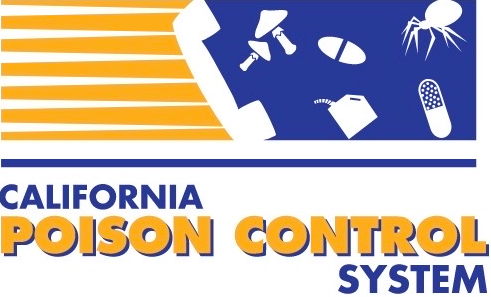By Janna Villano, MD
Introduction
Inhalant abuse describes the practice of inhaling vapors for the purpose of intoxication. Inhalant abuse is a growing practice, particularly among adolescents. Inhalants are particularly attractive to this age group because they are easily accessible, legal to purchase, and inexpensive. Inhalant abuse comprises the practice of huffing, sniffing, bagging, and dusting. Huffing entails holding a chemically soaked rag to the face and then inhaling. Sniffing describes inhaling the volatile substance directly from the container. Bagging is the practice of spraying or depositing a substance directly into a plastic or paper bag and subsequently inhaling the vapors, creating the potential for suffocation. Dusting, a more recent practice, describes inhaling the components of compressed air used to clean computer keyboards and electronic equipment.
Multiple common household and commercially available products, such as glues, paints and paint thinners, and aerosols are abused as inhalants. The majority of substances used are classified as volatile hydrocarbons (aliphatic, aromatic, or halogenated), nitrites, and nitrous oxide (NO). Volatile hydrocarbons include toluene, trichloroethane, butane, and tricholoethylene found in glues, spray paints, degreasing agents, and paint thinners. Computer dust cleaner commonly contains difluoroethane and tetrafluoroethane. Nitrites are found in “poppers,” room deodorizers and incense, and NO is commonly abused using whipped cream dispensers or cartridges of compressed gas (“whippits”). Central nervous system (CNS), cardiac, pulmonary, renal and hepatic toxicity have been reported with both acute and chronic use. Death generally occurs as a result of cardiotoxicity (sudden sniffing death syndrome) or as the result of trauma incurred during intoxication.
Case presentation
A 20-year-old male is brought to the hospital by ambulance after a motor vehicle accident. Police noticed he was driving erratically and attempted to issue a ticket. He subsequently drove his car off the road and into a fence. A passenger in his car noted that he was unresponsive for several seconds. He was brought to the hospital by ambulance. Paramedics found a can of computer dust cleaner in the center console of the patient’s car. When brought to the hospital he was agitated. His vital signs included a heart rate of 114 beats per minute, blood pressure 125/80 mmHg, and respiratory rate of 30 breaths per minute. He was found to have intra-oral burns. The remainder of his physical exam was otherwise normal. EKG revealed sinus tachycardia with multiple premature ventricular contractions (PVCs). He was monitored for several hours in the Emergency Department and was administered benzodiazepines for agitation. His friend admitted that he has a history of inhalant abuse and has multiple cans of computer dust cleaner which were stolen from his father’s office. The patient and his friend were educated regarding hazards of inhalant abuse prior to hospital discharge.
Questions
- What laboratory and imaging findings may be present in acute and chronic inhalant abuse?
- Can chronic inhalant abusers experience withdrawal symptoms upon cessation?
- What are the chronic effects of NO abuse?
Epidemiology
Inhalant abuse in the United States is reported in a wide variety of age groups with the highest concentration in adolescents ages 12 to 17 years old. In 2009, the American Association of Poison Control Centers (AAPCC) reported that the prevalence of inhalant cases reported to poison control centers was 7.92 cases per million. Between 1993 and 2008, 167 deaths reported to poison control centers were attributed to inhalant abuse. Youth risk behavior surveillance data from 2011 revealed that approximately 11 percent of high school students report at least once incidence of inhalant abuse. Over time, the frequency of products used generally reflects availability and changing sales trends. Males are more likely to abuse inhalants than females, though use among females in increasing. There are slightly higher rates of inhalant abuse reported in rural settings than urban settings.
Pathophysiology
Abused inhalants are generally very lipophilic and are absorbed quickly by pulmonary capillaries into systemic circulation. CNS neurons are particularly susceptible, and the desired clinical effect is achieved rapidly. Similar to ethanol, volatile hydrocarbons produce their clinical effects by stimulating inhibitory neurotransmitters in the CNS, GABA and glycine, as well as inhibiting the excitatory neurotransmitter NMDA. Variations in pharmacologic action exist between the hydrocarbons with toluene being the most well-studied. Cardiotoxicity occurs due to myocardial sensitization and inhibition of myocardial voltage-gated sodium channels as well as inwardly rectifying potassium channels, which subjects patients to cardiac dysrhythmias. Depth of CNS depression and onset of action are dependent on solvent concentration. Elimination of volatile hydrocarbons occurs largely via respiration, however some solvents undergo hepatic metabolism and urinary clearance. Like other drugs of abuse, volatile hydrocarbons activate the mesolimbic dopamine system, contributing to chronic use and withdrawal symptoms.
Volatile alkyl nitrites, however, exert their effect via central and peripheral vascular smooth muscle relaxation. NO is absorbed rapidly by the CNS causing NMDA inhibition without GABA effects. Clinical effects occur due to vasodilation, creating a sense of warmth. Rapid absorption across the pulmonary bed results in hypotension and reflex tachycardia lasting minutes.
Clinical presentation
Clinical effects of the inhalants generally are rapid in onset and resolve within minutes to hours. Users generally experience a brief period of euphoria followed by somnolence and impaired judgment and coordination. Users may complain initially of nausea, vomiting, palpitations, coughing, sneezing, and tearing. A large proportion of hospital admissions due to inhalant abuse are due to trauma that occurs while abusers are under the influence. Burn injuries from flammable agents have been reported as well.
Abuse of volatile hydrocarbons occurs largely due to CNS effects, which occur quickly as the highly lipophilic compounds cross the blood brain barrier. Shortly after use, patients may experience headache, agitation, hallucinations, ataxia, disorientation, and seizures. Effects generally resolve rapidly without acute intervention, however repeated exposures may result in more prolonged CNS depression and coma. Chronic abuse of hydrocarbons can lead to longstanding and progressive neurologic impairment. Peripheral neuropathy, cerebellar dysfunction, and cognitive impairment have been described. Leukoencephalopathy (white matter degradation) occurs due to breakdown of the myelin sheath and may be evident on neuroimaging studies. Some gasoline preparations may contain lead and cause associated neurologic impairment as well.
Cardiac toxicity is well reported with abuse of inhaled hydrocarbons. Syncope is a common hospital presenting complaint. Inhaled hydrocarbons are thought to increase myocardial sensitivity to endogenous catecholamines. This is the mechanism by which “Sudden sniffing death syndrome” occurs. When a person exposed to inhaled hydrocarbons experiences a catecholamine surge (fear, surprise, exertion), a fatal arrhythmia may ensue. This may occur with first time abusers and occurs more frequently in halogenated hydrocarbon exposure. In addition, tachydysrhythmias, myocarditis and myocardial infarction have been reported. Chronic toluene use has been reported to lengthen the QT interval.
Pulmonary toxicity occurs primarily via hypoxia and aspiration. Hypoxia may result from suffocation (bagging) as well as displacement of oxygen in the alveoli. Aspiration of hydrocarbons and resultant pneumonitis is more likely to occur when the patient experiences nausea and vomiting. Surfactant dysfunction, pulmonary edema, or bronchospasm may occur. Patients may present with coughing or choking sensation with subsequent tachypnea and hypoxia. Radiographic abnormalities may not be evident for several hours.
Volatile hydrocarbons are also skin irritants, contributing to dryness and inflammatory changes. “Glue-sniffer’s rash” describes perioral dermatitis that occurs due to the drying effects. GI effects include nausea, vomiting, and abdominal cramping. Renal toxicity can occur due to metabolic acidosis and renal tubular acidosis, particularly with toluene use. Heavy toluene abuse is also associated with rhabdomyolysis and muscular weakness. Transaminitis and albuminuria may ensue. In chronic users, withdrawal symptoms have been described and include nausea, irritability, tremor, agitation, and dry mouth.
Nitrite inhalation causes relaxation of smooth muscle with resultant peripheral vasodilation, hypotension, and tachycardia. Elevated intracranial pressure occurs due to dilation of cerebral blood vessels to produce the clinical effects desired by abusers. Patients may present with headache, nausea, syncope, skin irritation, and bronchial irritation. Nitrite use may precipitate methemoglobinemia, with symptoms including fatigue, shortness of breath, cyanosis, tachycardia, and tachypnea. Eye pain and elevated intraocular pressures been reported as well.
Clinical effects of NO exposure are primarily neurologic. Neurotoxicity occurs due to its effects on Vitamin B12 (irreversible oxidation of the cobalt ion) and largely mimics the effects of pernicious anemia. In addition, NO itself contributes to Vitamin B12 deficiency. Chronic abuse is associated with neuropathy, impaired proprioception, ataxia, and psychosis. Effects are potentially though not always reversible with abstinence. In addition, if NO gas is directly inhaled from a pressurized tank, pulmonary injury, including pneumothorax, may occur.
Diagnosis
Diagnosis of inhalant abuse is made primarily by history and clinical presentation. An unresponsive patient may have evidence of skin changes or a particular odor. Physicians should be suspicious of young patients who present with cardiac arrest, especially if friends, family members or Emergency Medical Services uncover evidence of inhalant canisters. In general, laboratory studies are largely unhelpful in identifying abused inhalants, except in the setting of some occupational exposures. In chronic abusers of toluene, metabolic acidosis, electrolyte abnormalities, and renal tubular acidosis may be present. Chronic abusers of halogenated hydrocarbons may have evidence of renal or hepatic impairment such as transaminitis and albuminuria. Hypoxia may be present on pulse oximetry and telemetry and electrocardiograms may reveal arrhythmias. Along with clinical signs and symptoms, chest radiography may reveal evidence of aspiration, particularly several hours after exposure. Nitrite abusers with clinical signs of methemoglobinemia (i.e. cyanosis that does not resolve with oxygen) should be tested by blood gas co-oximetry.
Treatment
Management of inhalant intoxication is primarily supportive and paired with withdrawal of the offending agent. Airway, breathing, and circulation should be addressed. Asymptomatic patients may be monitored closely with telemetry and pulse oximetry in the Emergency Department for developing dysrhythmia and/or aspiration. Chest radiograph should be done on patients who demonstrate symptoms of aspiration and extended observation, including hospital admission, is warranted. Severe cases may progress to adult respiratory distress syndrome (ARDS), which requires aggressive respiratory support. Ventricular dysrhythmias may be treated with beta blockade, though these dysrhythmias often occur prior to ED arrival. B12 supplementation is recommended for NO abusers.
There is a general opinion among inhalant abusers that this practice is relatively safe. Education of abusers and relatives with further cessation of inhalant abuse is paramount. Containers should be marked as hazardous and made inaccessible to children and adolescents whenever possible.
Discussion of case questions
- What laboratory and imaging findings may be present in acute and chronic inhalant abuse?
Patients who present with acute inhalant abuse often will not exhibit any laboratory abnormalities. Patients who develop symptoms aspiration may exhibit chest radiograph abnormalities. Chronic abusers of hydrocarbons may develop leukoencephalopathy with resultant CT and MRI changes. Abusers of toluene may demonstrate electrolyte abnormalities, metabolic acidosis and renal tubular acidosis. Abusers of halogenated hydrocarbons may have evidence of albuminuria and transaminitis. Nitrite abusers may develop methemoglobinemia. - Can chronic inhalant abusers experience withdrawal symptoms upon cessation?
Yes. Similar to other drugs of abuse, use of volatile hydrocarbons activates the dopaminergic mesolimbic pathway, encouraging chronic use, tolerance, and withdrawal upon cessation. Withdrawal symptoms include irritability, insomnia, nausea, craving, and dry mouth. - What are the chronic effects of NO abuse?
Effects of chronic NO abuse largely mimic those of vitamin B12 deficiency and are primarily neurologic. Peripheral neuropathy, impaired proprioception, and ataxia have been described.



